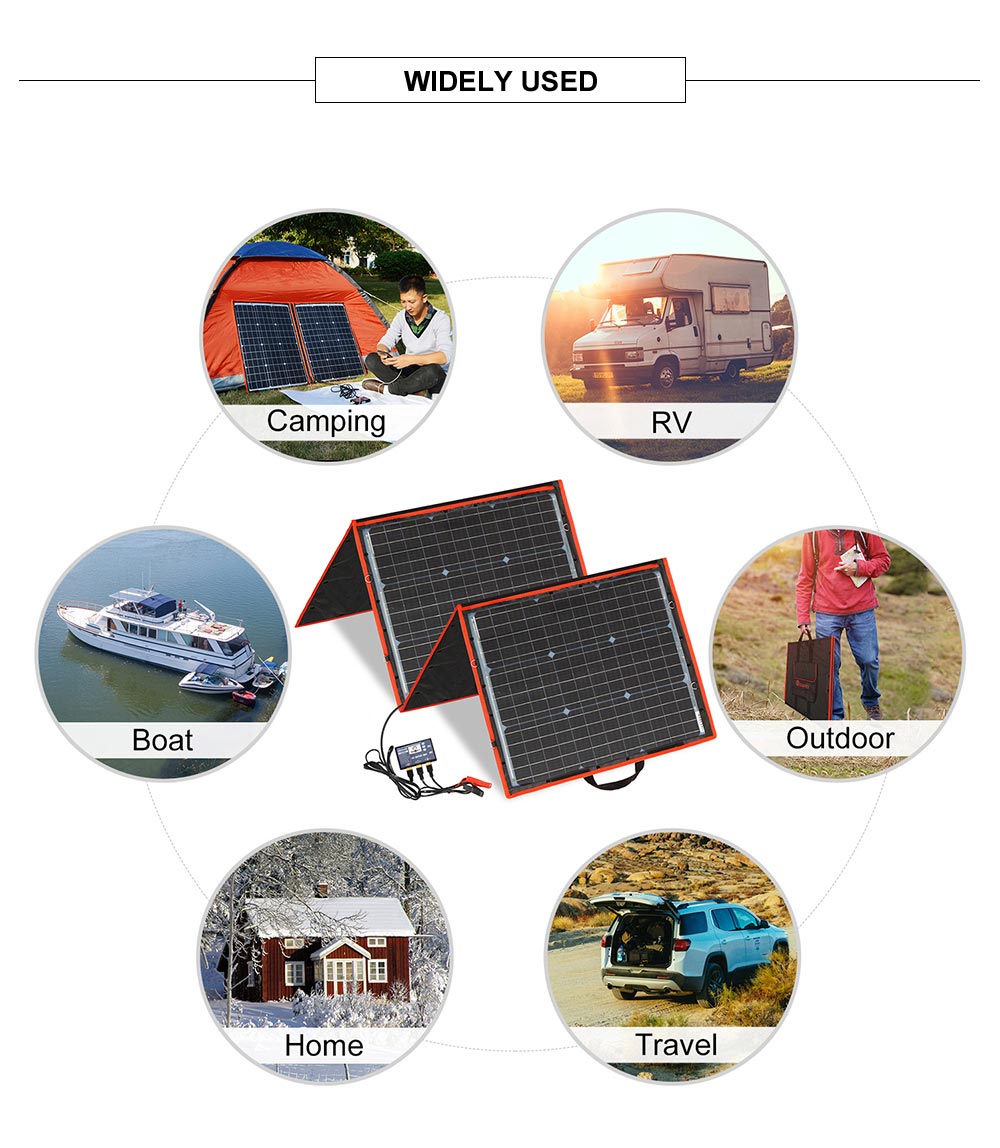How do solar panels work?
Solar panels are becoming more and more popular today as an alternative to traditional electricity generation methods. By using solar panels, we can harness the solar energy provided by the sun and generate power for anything from a refrigerator to an automobile. Have you ever seen solar panel covered roofs or school zone signs with solar panels atop and wondered how these solar panels work and what's going on "behind the panels?"
 |
| Dokio 18V 150W Solar Panel monocrystalline Charge 12V Portable Foldble Solar Panel China For Boats/Out-door Camping/Car/RV |
What solar panels are comprised of and how solar panel technology works
Solar panel technology is based on 2 types of solar heat collection: solar collectors and solar cells. Since virtually all home and do-it-yourself solar panel projects utilize solar cells, we'll focus on the solar cell technology. Solar cells, also known as photovoltaic cells, is what makes up a photovoltaic panel, or more commonly known as a solar panel. Don't let the word photovoltaic intimidate you. Lets break it apart: photo = light and voltaic = electricity (think of volt or voltage). In essence it's representing the idea of converting light into electricity. These photovoltaic cells are mainly comprised of a semi-conductor, most commonly silicon. I'm sure you have heard about silicon, and are actually using the technology right now... in your computer! Silicon, used in microprocessors in every computer around the world, is a very popular semi-conductor, meaning it has the ability to conduct electricity. When light hits these silicon filled PV cells, the solar energy is absorbed and a current is produced inside the cell. By stringing together these PV cells into a solar panel, and placing contacts on the outside of this panel, we are able to tap into this electrical current.
Now that you know how solar panels work, what happens next?
Once we have the solar panels wired and working together, they need to be strategically placed in order to guarantee they are exposed to maximum sunlight. In the case of using solar panels at home, the roof would be the ideal choice for the solar panels. It is very important to pay close attention to the angle and placement of the panels to ensure the solar panels work at their highest efficiency. If even one of the solar cells is not fully exposed to sunlight, it can greatly reduce the efficiency of the entire panel. It is also quite common to adjust the angle of the panels through out the year in order to keep the solar panels exposed to sunlight during the different seasons. This might or might not be necessary for you depending on your individual configuration.
At this point we have generated electricity, but the process is not complete yet. In order to be able to use this energy inside your home, we need to first convert the current from a direct current (DC) to an alternating current (AC). To do this, we can use an inverter, which converts this electricity into an AC current that household appliances such as a refrigerator or air conditioner are able to use. Another good step is to make sure you store this energy for times when either there is little or no sunlight, such as at night. This can be done by storing this energy in deep-cycling batteries. Deep cycling batteries allow you to fully charge and recharge your batteries in order to draw a small amount of current over a long time span. This differs from a car battery, where you need a larger boost for a very short duration, i.e. when you start your car.
To complete AC generation, we need:
If you are looking for solar systems, with Ether elastic technology, then take a look at this:
Solar Radiant Energy: Ether Elastic Technology
✔ The space itself is the loss of inertia of the dielectric. Faraday: Loss of inertia dielectric produces a magnetic field.
✔ So, the smaller the space, the higher the capacitance
✔ The dielectric is a stress of the Ether, which is elastic. It allows inductive propagation light.
✔ A technology that stimulates Ether elasticity, with resonance, produces free energy:
✔ Pull in infinite energy from the sun with Ether elastic technology
✔ In essence, this is a version created from the original Nikola Tesla version: Radiant energy

